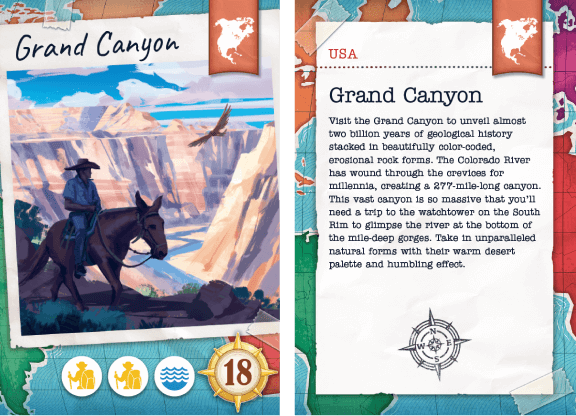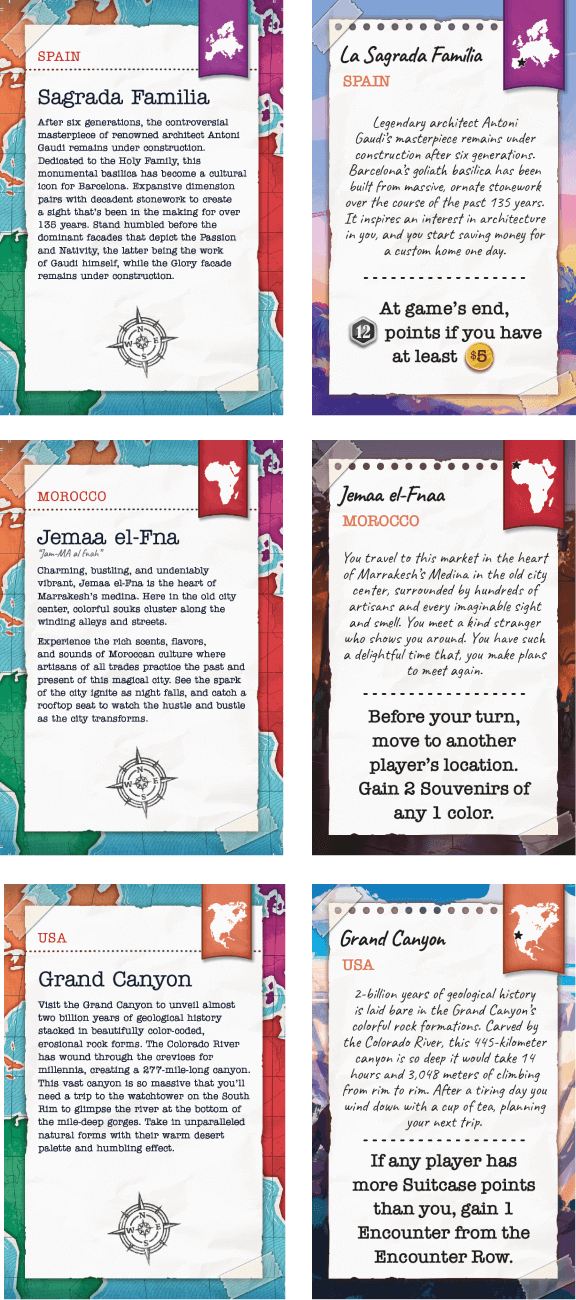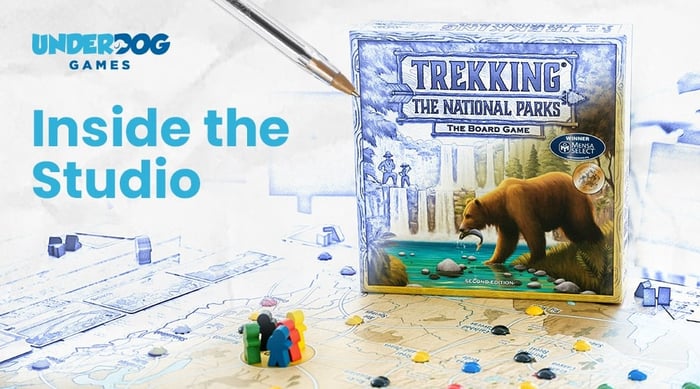Welcome to this week's behind-the-scenes post.
Today's is about how we're designing the content of the new version of Trekking the World we're making. Here's what the game will look like on the table:

I read every comment customers leave about our games on Amazon, Board Game Geek, and our own site. I've noticed a repeating criticism:
The content in our games could connect better with gameplay
We make games about real life. Each of our games has cards in it, which not only convey mechanics, but also depict real life subjects and contain information about them.
For example, each card in Trekking the World depicts a world landmark on one side, and tells you about it on the other. Here’s the front and back of the Grand Canyon card from the First Edition:

We take this content seriously because people tell us they value it. For example, we hear from a ton of homeschooling parents who use it to help their kids learn.
However, when you're playing, there's never a reason to read the content, or even turn over the card to see it.
This feels like a disconnect to some folks.
How to fix?
It’s a tricky problem. In games about fictional subjects, a designer has all the flexibility they need to integrate content and gameplay.
If I want to give players a special power in a science fiction game, I can make a Gluon Blaster card that tells you all about Gluon Blasters and gives you the power.
But in games about the real world, we don’t have as much freedom, for two reasons:
- A lot of the subjects we make content about don't do anything. The Grand Canyon isn’t a Gluon Blaster. It's a place, not a tool, and it just sits there, being grand.
- We have to make content decisions independently of game mechanics. For example, we have a game called Trekking the National Parks. It has to have Yellowstone in it, regardless of whether we have ideas for integrating Yellowstone with the mechanics.
These difficulties are why our content is the way it is.
How Trekking the World 2nd Edition integrates content and gameplay
When my colleagues assigned me the task of improving Trekking the World, this is one of the things I sought to improve.
Here's the solution I landed on:
The content will describe not only the features of the landmark you're visiting, but also something that happens to you there, which moves your story forward.
That event will trigger an effect that mirrors the story in game mechanics.
Here are some examples. Below are side-by-side comparisons of the text from the old (left) and new (right) versions of Trekking the World for various landmarks.

You'll notice all the new cards are written in the second person, to put you in the game.
We’re calling these events Encounters.
Important: There’s always a row of four of these cards, text-side-up, next to the board. You have an Encounter simply by going to the location on the map and taking the Encounter card for it from the row, for free.
This gives you strategic control over which Encounters you have. The only cost is the opportunity cost of traveling there instead of somewhere else.
This solution also allowed us to solve a second problem, which you may have seen if you play 1st Edition:
The Curse of the Unused Journey Cards
But that’s a subject for a different day.
Hope you like this solution! If not, uh, too late. So I hope at least you don’t hate it.
Please don't hesitate to share your opinions in a reply. I read all your replies (and reply when time permits) and it helps me understand what we're doing right and wrong.
Nick Bentley,
President, Underdog Games Studio


